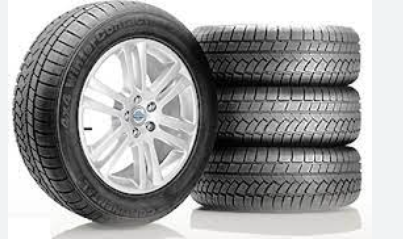
Road-Ready Wheels: A Comprehensive Tire Buying Handbook
Acquiring new wheels might be a challenging job, particularly if you’re unfamiliar with each of the requirements necessary to make a good choice. Understanding wheel specifications is essential in acquiring the appropriate wheels that can help you obtain the best efficiency from the vehicle. This informative guide is an essential Deck (Däck) resource for anybody thinking about buying new car tires. Its content has all the information you should make an informed determination.
Wheel Dimensions: One of the most vital requirements you must understand before acquiring your auto tires is the wheel size. Your wheel size spec is generally found on the sidewall of your respective older car tires. The three numbers that determine the wheel dimensions are the width, element percentage, and size. These requirements let you know how wide your tire is, how large it is actually, and what dimensions wheel it fits on. Make sure the new wheel dimension complements those amounts. Remember that appropriate your car or truck using the wrong size wheel can severely have an impact on its performance, energy consumption, and safety.
Tread Wear: The tread wear score is really a attribute that signifies how long the tire can last. This score is displayed by a variety from 100-800. Car tires with a greater amount have much better toughness and may give far more mileage than car tires using a reduced quantity. A tread dress in status of 500, as an example, equates to 50,000 miles of use under ideal conditions. A wheel with higher longevity might cost a lot more, however it could help you save dollars in the end.
Traction: One more important attribute of tires you shouldn’t neglect is definitely the Traction status. This rating indicates the tire’s capacity to traction the road area under damp circumstances. Higher levels signify the wheel is less likely to skid or hydroplane on wet roadways, delivering better handle and security. Traction is scored AA, A, B, or C, with AA rated tires providing the very best grip in moist problems.
Load Capacity: Every single tire comes with a stress list, showing the maximum bodyweight that this tire can carry. Properly packed tires increase handling and provide greater stableness on the road. It’s necessary to determine your vehicle’s body weight, including the weight in the tires, passengers, freight, and also the vehicle’s bodyweight, to pick the correct load crawl score.
Speed Status: The Rate Score notifys you the highest rate your wheels can handle before it actually starts to build problems. Rankings range between L, which is the same as 75 mph, to Y, which can handle rates of speed up to 186 mph. Ensure that the velocity score of the new tire is at minimum as high as that from your older auto tires. If you’re a high-velocity motorist, recall only wheels using a better velocity ranking than that of your car’s company referrals will not void your car’s warrantee.
Simply speaking:
Knowing wheel specifications is important to create a well informed choice when purchasing new car tires. Knowing the principal features we defined above – tire sizing, tread use, grip, stress potential, and speed status – can help you get the very best performance and long life out of your new wheels, improve control and safety on the highway, and reduce costs in the long term. Be sure you speak with a wheel expert if you have any questions or problems that require clarification before you make your final decision. With this in mind, you should be confident and feel comfortable making tire buys that maximize your traveling and automobile performance.